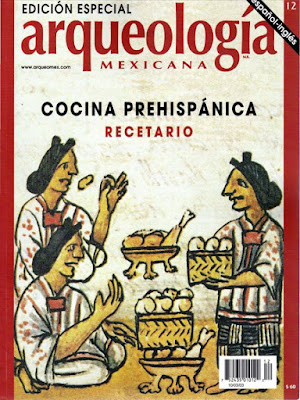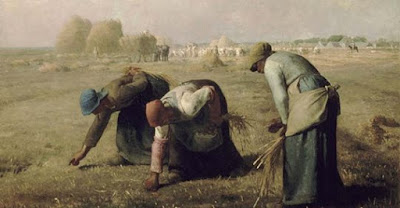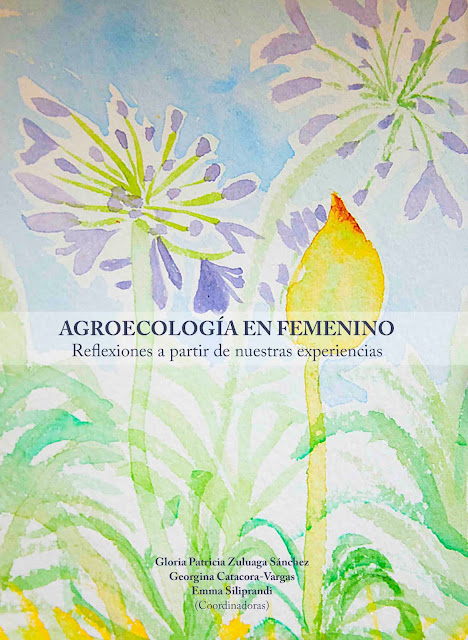Lautaro Hilbert et al.
viernes, 30 de noviembre de 2018
Evidence for mid-Holocene rice domestication in the Americas
Lautaro Hilbert et al.
Lautaro Hilbert et al.
The development of agriculture is one of humankind’s most pivotal achievements. Questions about plant domestication and the origins of agriculture have engaged scholars for well over a century, with implications for understanding its legacy on global subsistence strategies, plant distribution, population health and the global methane budget. Rice is one of the most important crops to be domesticated globally, with both Asia (Oryza sativa L.) and Africa (Oryza glaberrima Steud.) discussed as primary centres of domestication. However, until now the pre-Columbian domestication of rice in the Americas has not been documented. Here we document the domestication of Oryza sp. wild rice by the mid-Holocene residents of the Monte Castelo shell mound starting at approximately 4,000 cal. yr bp, evidenced by increasingly larger rice husk phytoliths. Our data provide evidence for the domestication of wild rice in a region of the Amazon that was also probably the cradle of domestication of other major crops such as cassava (Manihot esculenta), peanut (Arachis hypogaea) and chilli pepper (Capsicum sp.). These results underline the role of wetlands as prime habitats for plant domestication worldwide.
.
.
jueves, 29 de noviembre de 2018
miércoles, 28 de noviembre de 2018
.
Useful wild plants are surprisingly poorly protected
.
https://blog.ciat.cgiar.org/wild-coffee-plants-christmas-trees-and-chocolates-tree-are-surprisingly-poorly-protected/
.
Useful wild plants are surprisingly poorly protected
" A new way of measuring plant conservation shows that a wide range of wild plants used for food, medicine, shelter, fuel, livestock forage and other valuable purposes are at risk...
...The Useful Plants Indicator scores almost 7,000 useful wild plants from 220 countries on a scale of 1-100, with 100 meaningfully protected. Any plant rated 75 or higher is “sufficiently conserved.” Low, medium and high priority for conservation is reflected by scores of 74-50, 49-25 and 24-0, respectively. The indicator equally weighs in situ plant conservation – in protected areas like national parks – and ex-situ conservation, which covers plants safeguarded in gene banks, botanical gardens and other conservation repositories."
..
https://blog.ciat.cgiar.org/wild-coffee-plants-christmas-trees-and-chocolates-tree-are-surprisingly-poorly-protected/
.
martes, 27 de noviembre de 2018
lunes, 26 de noviembre de 2018
domingo, 25 de noviembre de 2018
sábado, 24 de noviembre de 2018
Organic farming at local and landscape scales fosters biological pest control in vineyards
Lucile Muneret Arthur Auriol Denis Thiéry Adrien Rusch
Lucile Muneret Arthur Auriol Denis Thiéry Adrien Rusch
While organic farming practices, which are often promoted as models of ecological intensification, generally enhance biodiversity, their effects on the delivery of ecosystem services, such as biological pest control, are still unknown. Here, using a multi‐scale hierarchical design in southwestern France, we examined the effects of organic farming and seminatural habitats at the local and landscape scales on biological control services of three pests, including weeds and insects, in 42 vineyards. Organic farming at the local and landscape scales was beneficial to the mean and temporal stability of biological control services, while the proportion of seminatural habitats in the landscape reduced the level of biological pest control potential. The effects of organic farming and seminatural habitats across spatial scales varied with the type of prey considered and with time. Egg moth removal rates were higher in fields under organic management compared to conventional management while weed seed removal rates increased with the proportion of organic farming in the landscape. Larval removal rates as well as seed removal rates were always more stable within time in organic fields than in conventional fields. Moreover, independently of farming system type, local variables describing the agricultural management intensity, such as pesticide use or crop productivity, were also found to be important variables explaining levels of biological control services. Pesticide use tended to reduce biological control potential, while crop productivity was associated with contrasting biological control responses depending on the pest type. Our study demonstrates the need to target multiple spatial scales and to consider farming practices, as well as the proportion of seminatural habitats, to design functional landscapes that optimize biological pest control services.
.
.
.
viernes, 23 de noviembre de 2018
.
--------------------o--------------------
.
.
Therefore, we attempt-to treat the same problem with several alternative models each with different simplifications but with a common biological assumption. Then, if these models, despite their different assumptions, lead to similar results we have what we can call a robust theorem which is relatively free of the details of the model. Hence our truth is the intersection of independent lies.
.
Richard Levins. 1966. The strategy of model building in population biology.
.
.
Richard Levins. 1966. The strategy of model building in population biology.
.
--------------------o--------------------
.
lunes, 19 de noviembre de 2018
.
Aelian (175- 235 CE). On the characteristics of animals.
.
The inhabitants of Thessaly, of Illyria, and of Lemnos regard jackdaws as benefactors and have decreed that they be fed at the public expense, seeing that jackdaws make away with the eggs and destroy the young of the locusts which ruin the crops of the aforesaid people. The clouds of locusts are in fact considerably reduced and the season's produce of these people remains undamaged.
Aelian (175- 235 CE). On the characteristics of animals.
.
domingo, 18 de noviembre de 2018
sábado, 17 de noviembre de 2018
viernes, 16 de noviembre de 2018
'Facts' don't give scientists a monopoly on the truth
by Wayne Linklater
Andrea Byron, leader of the National Science Challenge for Biological Heritage, recently wrote: "I am not debating the facts. 1080 is safe to use."
Such statements from scientists harden, rather than resolve, the
environmental conflict over 1080's use. They are paraded by one side as
the "scientific truth" and decried by the other as misleading. Each side
accuses the other of falsehoods, and the conflict worsens.
Scientists' assurances about 1080's "safety" aren't helpful because
they are expressions of their personal and cultural values, not the
"facts" that they pronounce them to be.
How poisonous 1080 is, and what and how many animals are killed, can be
measured and established as a fact. But to conclude that 1080 is
"safe", scientists must interpret those facts subjectively, in ways that
are influenced their values and beliefs.
It
is normal to mix factual information with our cultural values and
beliefs – we all do it. The problem arises when scientists pretend they
do not.
Like
old-fashioned religious leaders, when scientists make authoritative
statements about the safety of tools, like 1080, Roundup, and
genetically modified wildlife, they are behaving as if they have
infallible knowledge from a higher power. But instead of an imaginary
God, their higher power is science and its imagined objectivity.
Take, for example, the promotion of 1080 as "moderately humane".
If we could measure how much pain an animal experiences when poisoned
with 1080, then it might get a middling score, say 5 out of 10.
The personal values of some scientists have led them to interpret that score as good, and supporting 1080's use, because they value protecting biodiversity over eliminating animal suffering.
But someone who is more concerned about animal cruelty could use the
same score to conclude that 1080's use is unacceptable. After all, any
poison that is moderately humane must also be moderately inhumane.
Both are legitimate and reasonable arguments using the same facts. Neither is incorrect.
It is the same for 1080's safety. A more risk-sensitive person than
Dr Byron would conclude that 1080 is not safe enough. Both are
interpreting the same facts, but with a different set of values and
priorities. They are both sensible arguments.
Putting aside the false information from some on both sides, the 1080 debate is not a conflict over facts.
Whether discussing the safety or humaneness of 1080, Roundup, or
genetic engineering, and all the other environmental conflicts that fill
our news, it is people's different values and cultures that are the
source of disagreement.
On this Dr Byron and I agree: "People make decisions and form opinions based on their personal values, belief systems, and world views." What she failed to do was acknowledge that this is true of scientists too.
We scientists could contribute more constructively to environmental
debates if we acknowledged the part played by our own subjectivity and
values.
Instead, unfortunately, scientists have a tendency to inflame debate by
accusing others of allowing subjectivity to cloud their judgment. In
her writing, Dr Byron described the pro-1080 and science community as
applying "reason and logic in decision-making" – implying that the anti-1080 community was irrational.
This science "facts rational" v "values irrational" framing is a common
error by the pro-1080 community, especially among scientists, and it is
understandably interpreted as insulting by others.
So long as we erroneously claim to be "right" because we use facts, and
others "wrong" because they use values, we will continue to fuel
environmental conflicts.
Science and scientists can provide us with more reliable information
but they cannot, and should not, impose their values on others from
pulpits of scientific authority – behaving like high-priests of the
truth.
Science and scientists have been used to justify polluting industries,
cigarettes, DDT, and nuclear weapons, to name a few of many. It is
right, therefore, for citizens to be critical of science and scientists,
and the values they mix with facts when they make pronouncements about
the "truth".
It is naive to think that these environmental debates can be solved by
scientists and science. Instead, we resolve them by sitting down
together to respectfully speak and hear about our different values,
beliefs and cultures. Then we engage in some good old-fashioned
person-to-person negotiation to find a way for both sides to be part of
the solution.
Only then are scientific information and scientists most useful – values first, facts second.
.
.
jueves, 15 de noviembre de 2018
miércoles, 14 de noviembre de 2018
martes, 13 de noviembre de 2018
lunes, 12 de noviembre de 2018
.
The earth has music for those who listen
George Santayana
.
The earth has music for those who listen
George Santayana
.
domingo, 11 de noviembre de 2018
jueves, 8 de noviembre de 2018
miércoles, 7 de noviembre de 2018
Tropical tree diversity mediates foraging and predatory effects of insectivorous birds
Colleen S. Nell, Luis Abdala-Roberts, Victor Parra-Tabla, Kailen A. Mooney
Colleen S. Nell, Luis Abdala-Roberts, Victor Parra-Tabla, Kailen A. Mooney
Biodiversity affects the structure of ecological communities, but little is known about the interactive effects of diversity across multiple trophic levels. We used a large-scale forest diversity experiment to investigate the effects of tropical tree species richness on insectivorous birds, and the subsequent indirect effect on predation rates by birds. Diverse plots (four tree species) had higher bird abundance (61%), phylogenetic diversity (61%), and functional diversity (55%) than predicted based on single-species monocultures, which corresponded to higher attack rates on artificial caterpillars (65%). Tree diversity effects on attack rate were driven by complementarity among tree species, with increases in attack rate observed on all tree species in polycultures. Attack rates on artificial caterpillars were higher in plots with higher bird abundance and diversity, but the indirect effect of tree species richness was mediated by bird diversity, providing evidence that diversity can interact across trophic levels with consequences tied to ecosystem services and function.
.
.
.
--------------------o--------------------
Sweet is the lore which nature brings;
Our meddling intellect
Misshapes the beauteous forms of things;
—We murder to dissect.
William Wordsworth
--------------------o--------------------
.
--------------------o--------------------
Sweet is the lore which nature brings;
Our meddling intellect
Misshapes the beauteous forms of things;
—We murder to dissect.
William Wordsworth
--------------------o--------------------
.
martes, 6 de noviembre de 2018
A plant biodiversity effect resolved to a single genetic locus
Samuel E. Wuest and Pascal A. Niklaus
Samuel E. Wuest and Pascal A. Niklaus
There is now pervasive evidence of positive effects of biodiversity on plant community productivity and functioning. Although some advances have been made linking diversity effects to functional trait variation, progress towards a mechanistic understanding remains slow - in part because biodiversity effects are emergent complex properties of communities, and mechanisms might differ between communities or environmental conditions. Without a mechanistic understanding, however, the advancement of ecological theory as well as applications in agriculture are impeded. Here, we analyse non-additive interactions between divergent Arabidopsis accessions in experimental plant communities. By combining concepts and designs from ecology and plant breeding with genetic methods, we have identified a major effect locus at which allelic diversity promotes community productivity. In further experiments with near-isogenic lines, this diversity effect locus was resolved to a single region representing less than 0.3% of the genome. Using plant-soil-feedback experiments, we demonstrate that allelic diversity causes genotype-specific soil legacy responses in a subsequent plant generation. This suggests that asymmetric interactions of plants with soil-borne factors drive niche complementarity and that the impacts of allelic diversity can extend across generations. In summary, this work shows that positive diversity effects can be linked to single Mendelian factors, and that complex community properties can have simple causes. This may pave the way to novel breeding strategies, which focus on phenotypic properties that do not manifest themselves at the individual level, but only at a higher level of biological organisation.
Pot- level productivity in dependence of community type (mix = RIL mixtures vs mono = RIL monocultures), showing positive genotype mixture effects.
.
lunes, 5 de noviembre de 2018
domingo, 4 de noviembre de 2018
Suscribirse a:
Entradas (Atom)































